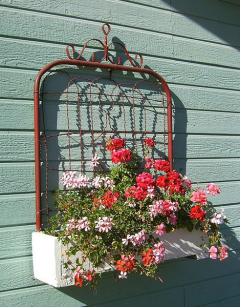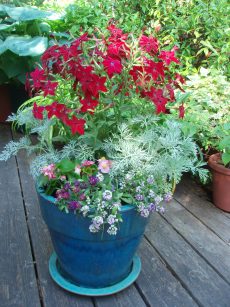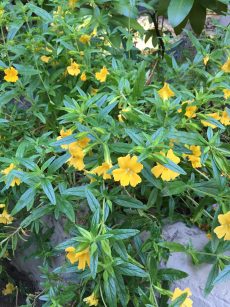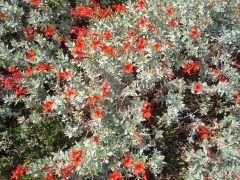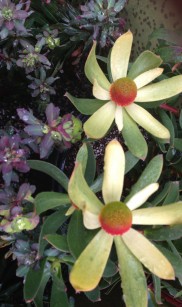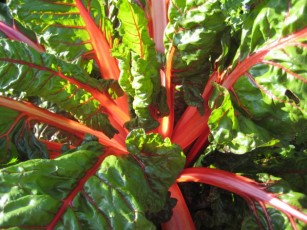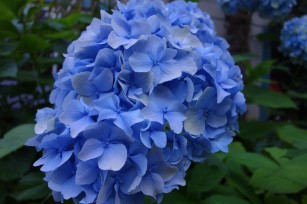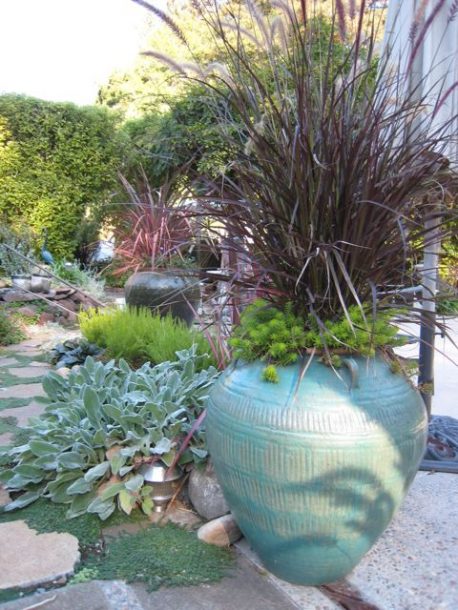
thriller with a sedum spiller.
When I moved up here to Bonny Soon from Felton I brought several hundred plants figuring that with over 2 acres of land I could put most of them in the ground. Many trees and shrubs did get planted but then I ran out of appropriate planting spots and just kept the rest in pots to create a container garden. Naturally, I?ve added more plants in pots ?cause I just can?t help myself when I see a colorful plant that will attract birds, bees and butterflies. My current count of potted plants is 253 so I?ve learned a thing or two about container gardening.
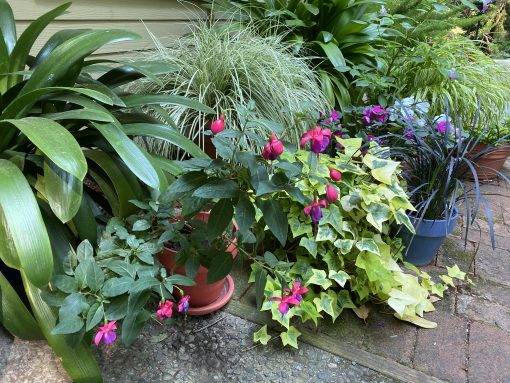
Mixed plantings in containers are the most dramatic with a thriller, some fillers and and a spiller or two but when I look around that?s not what I have the most of. Many of my large pots have trees like Dawn redwood, Japanese maples, flowering plums and cherries that I?ve had since the early ?90?s so I might underplant them with chartreuse sedum ?Angelina? or moneywort for a little color but that?s about it. I?ve found that even large trees and shrubs can survive in the same container for many, many years without root pruning or transplanting if they are fertilized once a year and watered thoroughly as needed.
In choosing a container, remember a porous clay pot will dry out fast in the summer sun as will a small pot. If you want pots on a sunny deck, you’ll have better results if your container is made or ceramic or colored plastic and is big enough to allow 2 inches of potting soil around the root ball. I don?t use water absorbing polymer granules in my containers as they are all in shade in winter and would stay too wet depriving plant roots of oxygen.
Water when the top 1 inch of soil in the container is dry. On a very hot day, watering mid day will cool the soil although I like to get my watering done early. Get to know your plants. Plants that are still growing into their containers need less frequent watering than those that are getting root bound. How much water? Water until it runs out the bottom and empty the saucer the next day if any water remains. Use a gentle nozzle that doesn’t dislodge the soil or compact it. Also make sure the water in the hose isn’t hot from lying in the sun.
Plants in containers are watered frequently and the water draining out of the bottom carries away nutrients. That said I have found that I can fertilize everything once a year with an organic all-purpose fertilizer like True 4-4-2. Blooming plants like abutilon, fuchsia, orchids, angel trumpet and the lantana, which I grow because the chipmunks don?t nibble them, receive a water soluble fertilizer once a month. Water soluble fertilizers are fast acting. Dry granules and time release capsules last longer. Organic fertilizers tend to work more slowly and are especially ideal for trees, shrubs and long lived perennials or for large planters in which you keep the same soil from year to year. Be sure plants are moist before feeding. The best fertilizer is the one that you get out of the package and onto your plants.
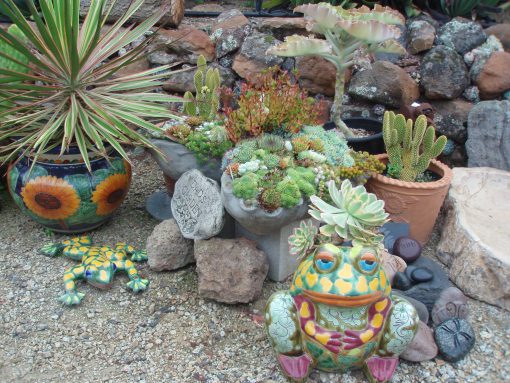
Be sure to use a quality potting mix in your containers. There are special succulent and cactus mixes available but succulents are forgiving as long as the soil drains freely. Don’t add gravel or clay shards at the bottom of the pot as this impedes drainage. It work best to fill the entire pot with soil, top to bottom with a screen over the hole to keep out earwigs and sowbugs.
You can grow anything in a container. Think of them as furnishings. Grow herbs and other edibles near the kitchen door, fragrant flowers to attract beneficial insects, hummingbirds and butterflies, California natives or even plants that glow in the moonlight.

